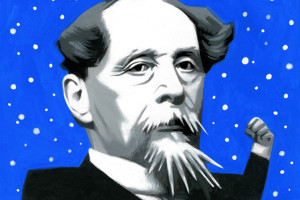WSJ Historically Speaking: A Brief History of Avoiding Exercise
Winter storms have become so frequent in the U.S. that they now have names, like hurricanes. This week saw the arrival of Seneca, making for a touch-and-go race about which will run out first: the alphabet or the jet stream. The weather in the eastern U.S. has been brutal enough this year that millions of Americans have been confined to their homes. In a country where, according to the Centers for Disease Control and Prevention, only one in six of us does anything like the recommended amount of physical activity, “Snowmaggedon” is a danger to the country’s health as well as its roads.
The ancients knew well that people will use any excuse to avoid exercise—bad weather, of course, being among the most popular. To counteract the natural human tendency toward inertia, the Greeks had their Olympics, the Chinese their tai chi and the Indians their yoga. The Romans went so far as to make exercise a legal requirement for all male citizens age 17 to 60. With the exception of Thomas Aquinas, who was colossally fat, lack of exercise was rarely a problem in the Middle Ages. Few people had time for aerobics when survival was the order of the day.
The early American settlers were also too busy chopping wood and dodging arrows to worry about their overall fitness. By the Federal era, the rot had already begun to set in.Thomas Jefferson was appalled by the sedentary habits of his countrymen. “If the body be feeble, the mind will not be strong,” he warned, adding: “Not less than two hours a day should be devoted to exercise, and the weather should be little regarded.”
His words apparently did little to stop the trend toward indolence. A century later, when the U.S. entered World War I in 1917, military authorities were shocked to discover that one out of three draftees was unfit for combat.
Washington responded with a raft of new laws, mandating that physical education be part of every school curriculum. The success of the program can be judged from the results of a national fitness test carried out by two New York University professors on U.S. schoolchildren in the early 1950s: Almost 60% failed at least one component, compared with only 9% in European countries.
But measures less grueling than spinning classes may still help keep us from remaining a nation of inveterate couch potatoes. A simple walk, as many poets and writers have discovered, will keep the heart and brain in working order. Wordsworth, Coleridge and Shelley were all noted walkers. The 19th-century essayist Thomas De Quincey believed that Wordsworth’s daily walk was responsible for “much of what is excellent in his writings.” Similarly, a two-mile stroll in the crisp September sunshine is said to have inspired John Keats to write his greatest poem, “Ode to Autumn.”
Charles Dickens was another great walker, routinely covering 20 miles in a day. During his last trip to the U.S., he devised a 13-mile walking race for his friends George Dolby and James Osgood. On Feb. 29, 1868, the day of the race, Boston was swirling in snow. Icicles formed on the men’s beards. Sensible people stayed indoors, but Osgood and Dolby braved the storm, urged on by Dickens from the comfort of his carriage. He rewarded them afterward with “a very splendid dinner” with guests including Oliver Wendell Holmes and Henry Wadsworth Longfellow.
For Dickens, and for us, the race mattered less than the message it carried. As Dickens put it, “Walk and be happy; walk and be healthy. The best way to lengthen out our days is to walk steadily and with a purpose.”

